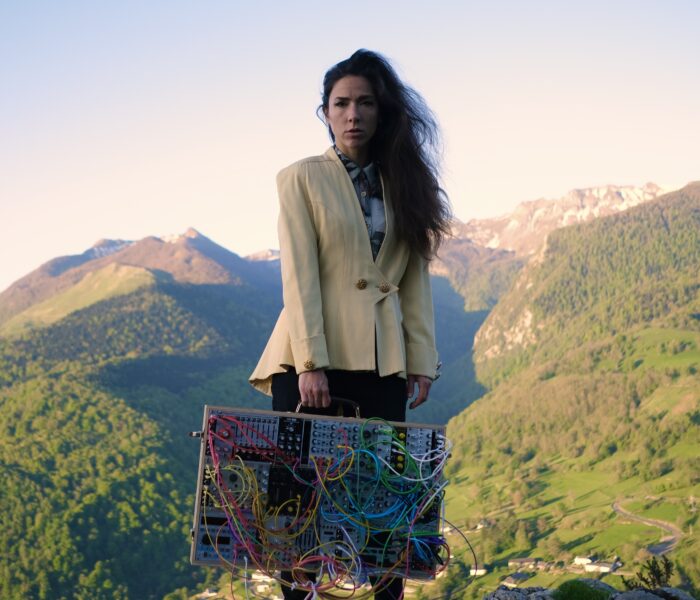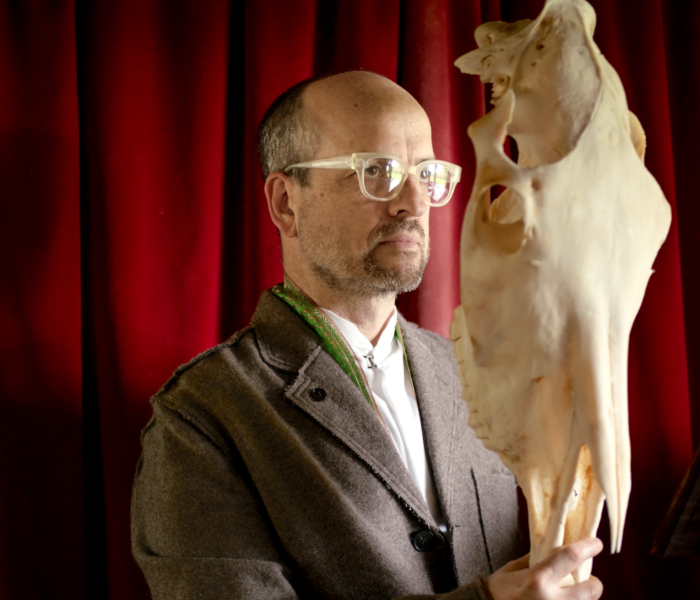An original personality in the world of creation, Canadian composer and performer Sarah Davachi likes to combine electronic and instrumental sources. Sometimes defined as a "drone artist" (continuous flow with slow evolution), she evolves in a stylistic current that could be situated between Éliane Radigue and Terry Riley, and traces her furrow in the current landscape of electroacoustic music.
You like to mix instruments and modular synthesizers; what types of machine do you like to work with and why?
To be honest, I don't work much with modular synthesizers any more, and haven't for several years now. I've turned much more to acoustic instruments over the last five years, especially those capable of a sustained sound like organs and strings, and I also combine these sounds with electronic instruments like electric organs and the Mellotron. I also use synthesizers, but generally the only ones I use today are wired instruments rather than modular ones such as the EMS Synthi AKS and Sequential Circuits Pro One. I prefer the limitations of wired synthesizers, they seem more like "instruments" to me, and sometimes I find the open format of modular synthesizers a bit awkward for my needs. When I use modular synthesizers, it's also in a very limited way: I only use a series of oscillators and filters, all controlled from a mixing module. I really like the simplicity of sound that emerges from this process, focusing on the complex harmonic experience of interacting sounds. I've always been very attracted to oscillators that have a high degree of spectral flexibility, like those designed by Buchla & Associates, where it's just a single sweep potentiometer between frequencies and waveforms. It allows the same amount of control and specificity while keeping the door open to the variations inherent in these types of vintage analog instruments. I love the instabilities of older instruments, which aren't usually present on more modern instruments, even modern analog instruments. That's where a lot of the magic of sound happens for me. But it's a very personal process for everyone, and these are just my preferences, not a desire to say whether one of these instruments is better or worse than the others. Wired instruments still give me the same sense of exploration and flexibility, but they're more manageable for my compositional process and needs.

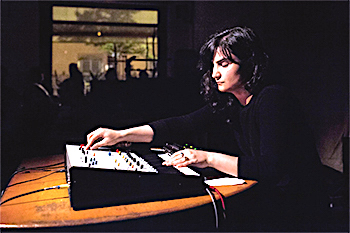
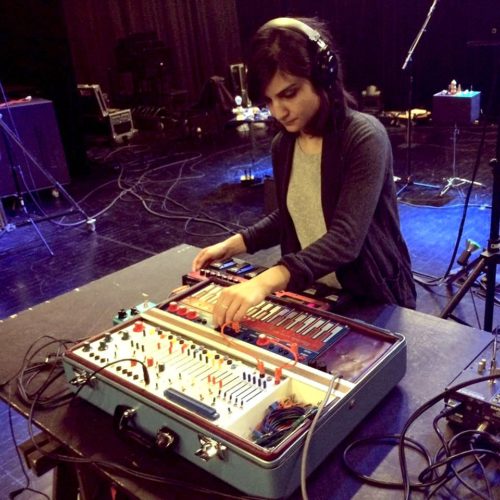
You often refer to Eliane Radigue when talking about your music; do you feel close to her aesthetic; is she a role model for you?
Eliane Radigue has been a huge influence on my career. I first discovered her work when I was doing my Masters at Mills College, around 2010, initially because of her association with the institution. I had begun to explore compositional work with extended tonalities and was very interested in the possibilities of electronic music and electronic sound, particularly modular synthesizers at the time, but I didn't have many reference points for what might be realistically possible. Along with La Monte Young and Alvin Curran, Éliane's work offered me a way forward in gathering my own compositional ideas about continuous sound and gradual change. I've always been fascinated by the idea of limits within instruments, but also within a composition, by restricting my resources to a single instrumental source and deepening its sonority. Éliane's exclusive focus on the ARP 2500 was a great inspiration to me at the time. I also found parallels in my interest in and increasing use of acoustic instruments since around 2015 - I still work with electronic instruments, but I tend to approach acoustic and electronic instruments in a similar way, an aesthetic orientation I also feel imprinted in Éliane's music.
You play older instruments such as the Mellotron andOrchestron; can you describe these instruments and tell us what attracts you to them?
I use the Mellotron a lot in my work. I've been attracted to this sound for quite a long time, perhaps because of the quality of the texture. The Mellotron is an early form of sampler, quite popular in the 1960s and 1970s before digital sampling took over. Each key on its keyboard is attached to a sort of tape-playback relay system, and then the key simply acts as a "play" button. So, when you press a key, the instrument's mechanism moves and plays a sound recorded on magnetic tape. Contrary to popular belief, the tapes on a Mellotron are not loops - the recorded sample lasts only about 8 or 9 seconds, and when it runs out, the sound stops, so you have to let go of the key and let the tape return to its starting position. Most Mellotron models use four-track tapes, so a single set of tapes for an instrument usually contains three different sounds, each recorded on one of the four tracks, and then you can switch between the samples. There's just wonderful physics in the instrument that, for me, really translates into the sound. The sound of the Mellotron is attached to a lot of traditional music, which doesn't bother me because I really like most of the popular music in which the Mellotron is used, but in my own music I try to erase these associations by using the instrument in a more direct way. The Mellotron keyboard is not unlike that of an organ, in that the sound comes and goes in a very on/off way. This is rather interesting when perceived with a Mellotron because the sample that sounds is often something that doesn't have such a clear attack or release, like strings. Generally, when I use the Mellotron, I use less connoted samples, like French horn, clarinet or nylon-string guitar. There are so many incredible brass and woodwind samples on the Mellotron!
You were invited to the Présences électronique festival by François Bonnet, in Paris in spring 2019, for a live performance with your modular synthesizer; we don't hear much of you on the French scene; how did the concert go, and what did you take away from the experience?
It's true, I don't perform much in France for some reason; in fact, I think I've only played in Paris once, as well as in Lyon. Of course, I've been looking into the history of electronic music in France, and to be able to work on a multichannel project in that context was pretty significant. I don't do a lot of multichannel performances and in fact, in the past, I've had a bit of trouble with it. I'm interested in the idea, but insofar as the experience is spatial, I find it hard to commit to a multichannel performance without having the ability to really immerse myself in the acoustic environment beforehand. I feel the same way about videos accompanying music; when it's done intentionally, it can be incredible, but it should never be added simply as an afterthought. So, for this performance, I was able to have an idea of the placement of the speakers in the room, which is essential for me, and I was able to develop a performance system that allowed me to incorporate live elements while broadcasting pre-recorded sounds in such a way as to assign different frequency spectrums to different parts of the room. There's an incredible listening device in the space and I was very pleased with the experience. This can be a challenge when playing in such an environment, as you're sitting in the worst place to hear how the sound interacts with the space through the speakers. The same applies to pipe organs: it's by no means a bad sound experience to sit right in front of the organ, but it's certainly different to sit at a distance and benefit from the acoustic environment of the hall. So, in this performance in Paris, it was very nice to be the performer and to be able to engage in real time with the sound but also to experience it in space.
Minimalist music takes the question of sound to a more fundamental level, you say: what is the sound you want to hear?
I agree that minimal music takes sound to a more fundamental level, but only insofar as we discuss the means or tools of practice. There's certainly something fundamental to be experienced in sound - sound for its own sake, the beauty of essence - that interests me greatly, but I find it problematic to assume that reduced means necessarily equate to a minimalist experience. I think that in most minimalist music, the resulting sonic experience is actually quite complex. The problem is that this kind of experience is not common in most musical practices, and is usually hidden behind other musical experiences associated with parameters such as melody and rhythm, or the harmonic spectrum. For example, the harmonic spectrum is an incredibly deep dimension and can be an extremely rich experience to immerse oneself in. To achieve this experience, however, the spectral quality itself must be brought to the fore. We experience the harmonic spectrum all the time in a very basic way through timbre - when we hear a violin, we know it's a violin and not a flute because we've trained our ears to associate the concept of "violin" with a particular timbre. It is largely the richness of the violin's spectrum that generates its unique timbre.
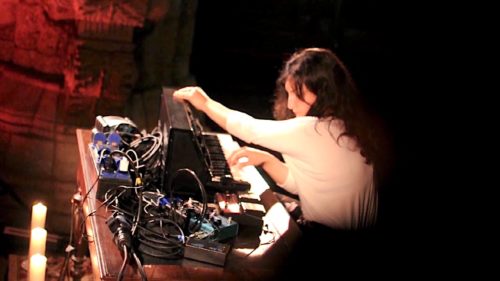

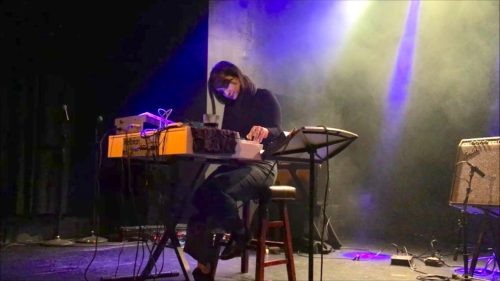
In minimalist music, this "essential" quality of sound itself, which is really a phenomenological experience, is brought to the fore and becomes the musical material. For me, it's really a simple and perhaps intuitive attraction to this kind of sound and this kind of listening. I was trained as a classical pianist and I remember, when I was young, hearing certain chords in the music I was playing and always wishing I could listen to those chords longer, prolonging the experience so much I found the harmony and harmonic texture of the moment so beautiful. So it was a natural inclination, I think, towards minimal music. I like the idea of inhabiting a sound, of digging inside it and letting myself be invaded by the sound itself, by the timbre and texture, not by the sound being put at the service of something else. This kind of musical experience necessarily requires a minimalist approach. In the same way as my interest in long forms of music and stretched time; these are things that are necessary in a sense to achieve such an inner, vertical experience of sound, a harmonic experience of sound. Again, this is just my experience, and I don't think it's the only or even the first experience associated with such a broad musical practice.
Interview by Michèle Tosi



)
